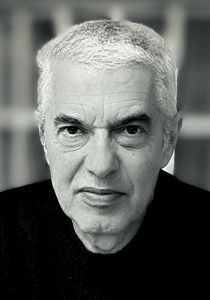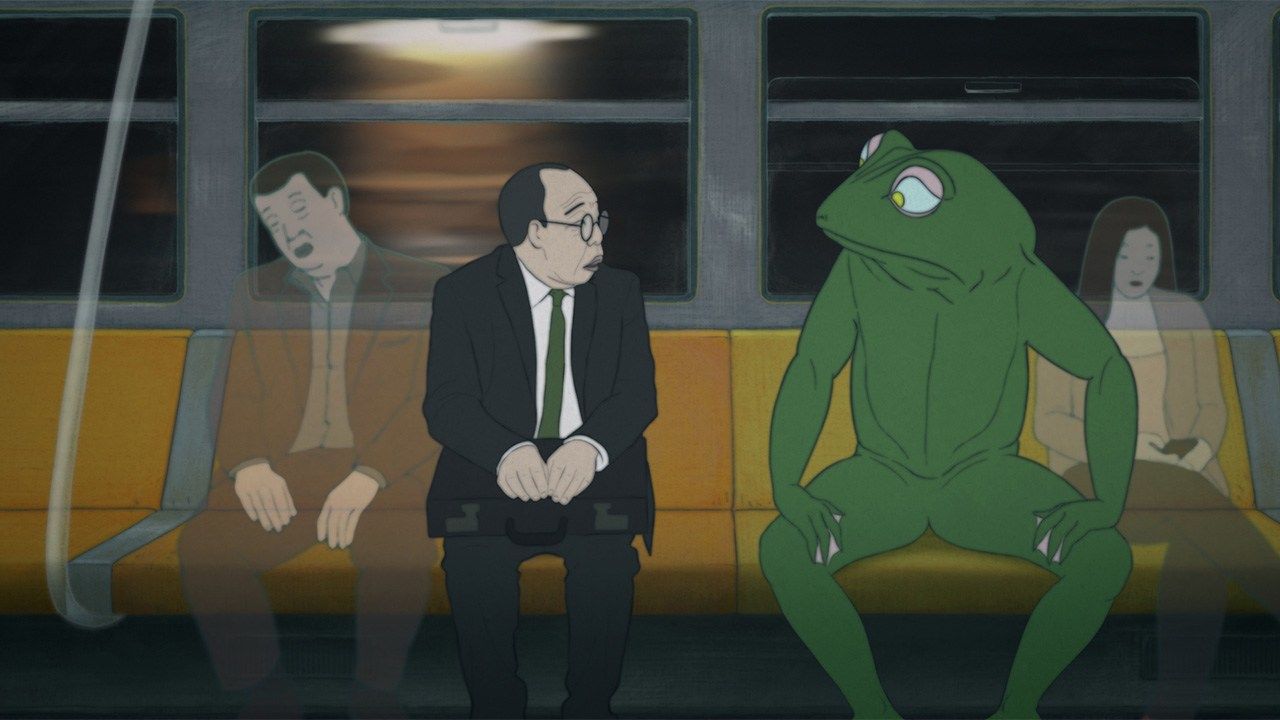
“Blind Willow, Sleeping Woman”: Animating the World of Murakami Haruki
Cinema Anime- English
- 日本語
- 简体字
- 繁體字
- Français
- Español
- العربية
- Русский
A Shaken Japan
Blind Willow, Sleeping Woman, showing in Japanese movie theaters from July 26, adapts six short stories by Murakami Haruki into a feature-length animated film. It won a Jury Distinction award at the 2022 Annecy International Animation Film Festival and the Grand Prix at the Niigata International Animation Film Festival; it was also praised by Murakami himself. The adapted stories are “Super-Frog Saves Tokyo,” “Birthday Girl,” “Dabchick,” “The Wind-Up Bird and Tuesday’s Women,” “UFO in Kushiro,” and “Blind Willow, Sleeping Woman.”
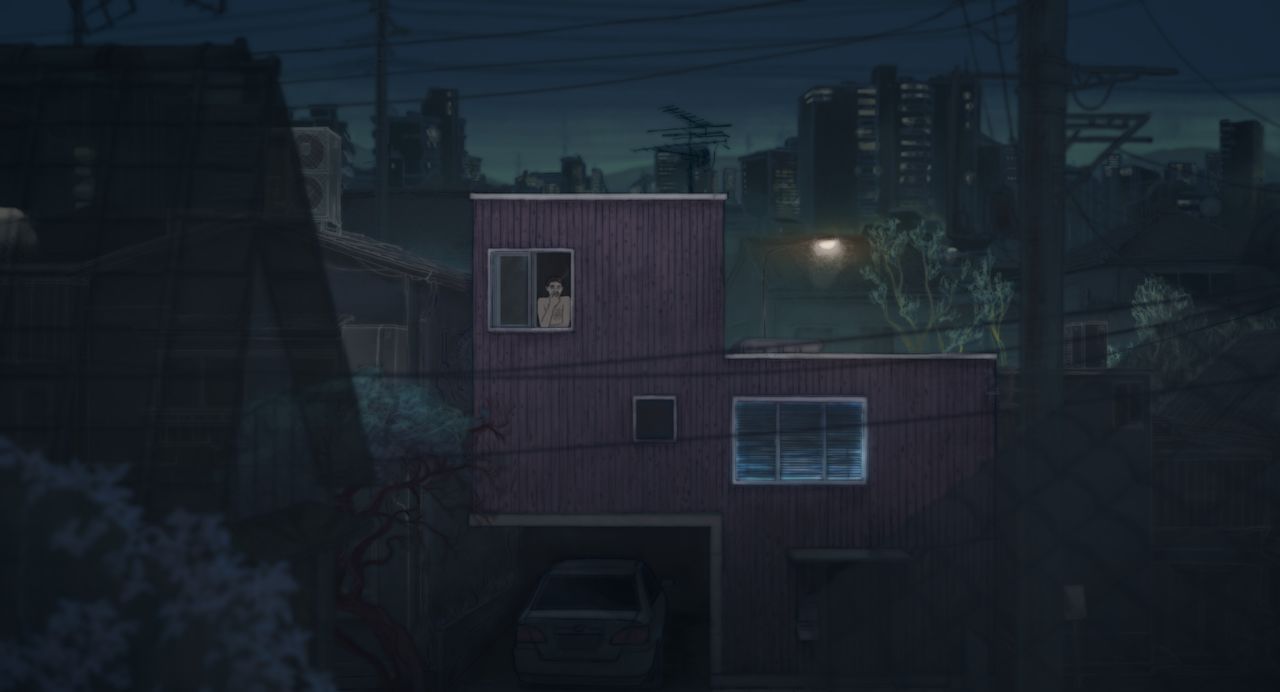
The story begins some days after the Great East Japan Earthquake takes place.
The movie is set in Tokyo in March 2011, several days after the Great East Japan Earthquake on March 11. After continuously watching news from the disaster zone, Kyōko disappears, leaving a letter behind her. Shaken by the sudden vanishing, Komura is entrusted with a mysterious small box from a colleague and travels to Hokkaidō to deliver it to the man’s sister. Around the same time, another of Komura’s colleagues called Katagiri meets a giant frog, who asks him to help save Tokyo from a giant earthquake.
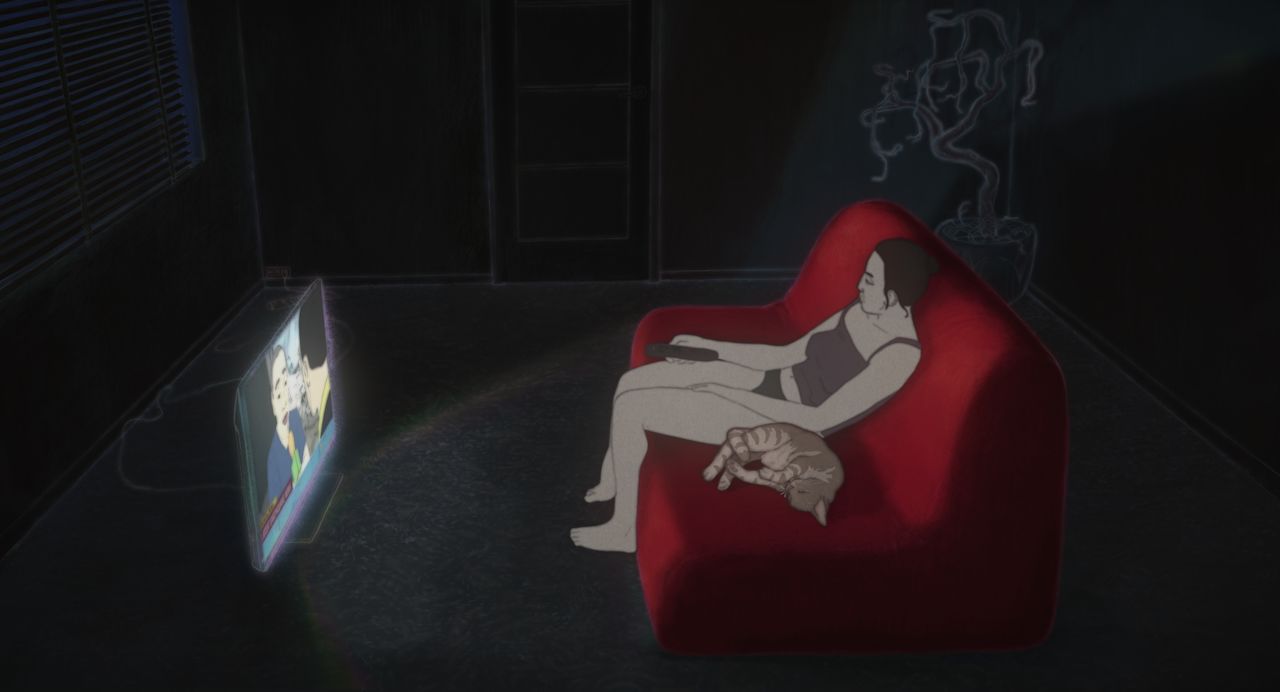
Komura’s wife Kyōko disappears after watching endless programs about the earthquake, even through the night.
Director Pierre Földes describes how he fell in love with the Murakami stories he decided to put on screen. “First of all, there’s the unique, innovative style. I was drawn by the tension between the supernatural and the everyday. Murakami depicts the movements in the depths of human hearts through ripples on the surface, providing a fresh perspective.”
He was particularly inspired by the richness of the characters. “Frog, Komura, and Katagiri are eccentric, funny, and touching. And I love the unique atmosphere of the stories, where there’s always some kind of humor and cynicism—I tried to re-create that atmosphere on the screen. I felt it was vital to retain that.”
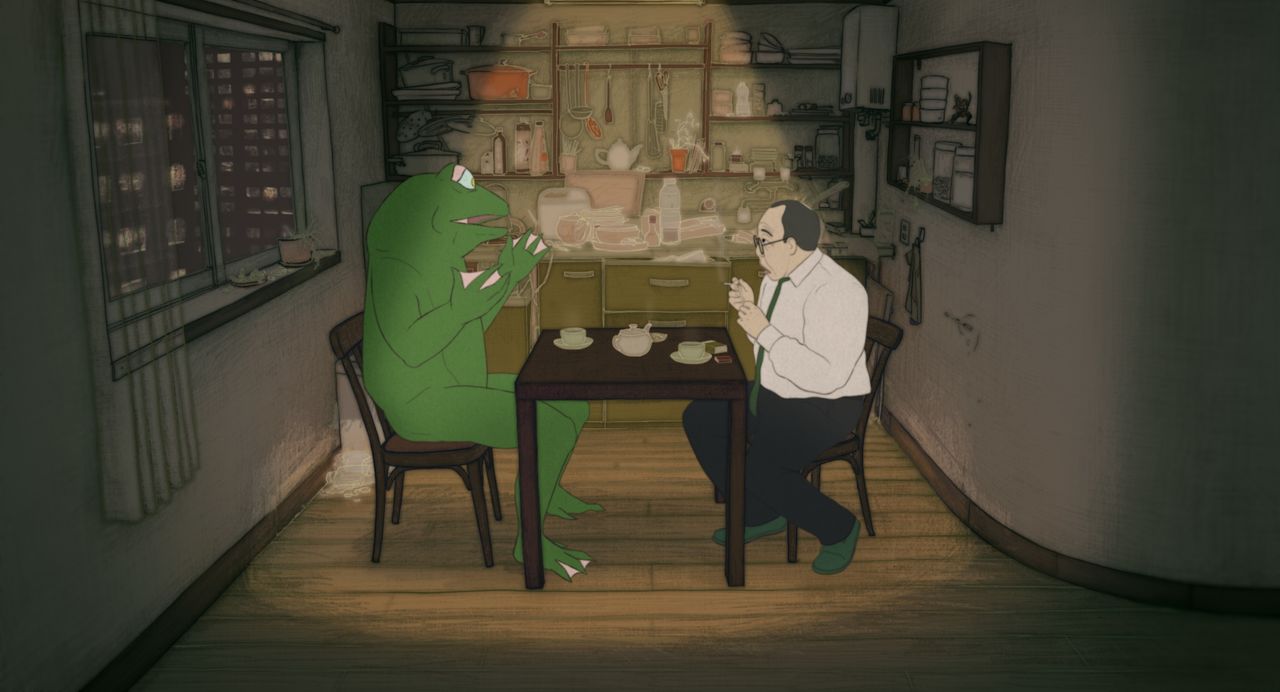
One night when Katagiri goes home, he finds Frog waiting for him.
Adapting Murakami
Földes has an intuitive form of creativity. He chose the six stories for the film because they each spoke to him most powerfully. “There are dozens of ways of adapting a work, but I follow the basic rule of creating something original. Rather than the text itself, I’ve been faithful to what I read between the lines, because I think that’s a more faithful approach. I wanted to discover the essence of what inspired Murakami.”
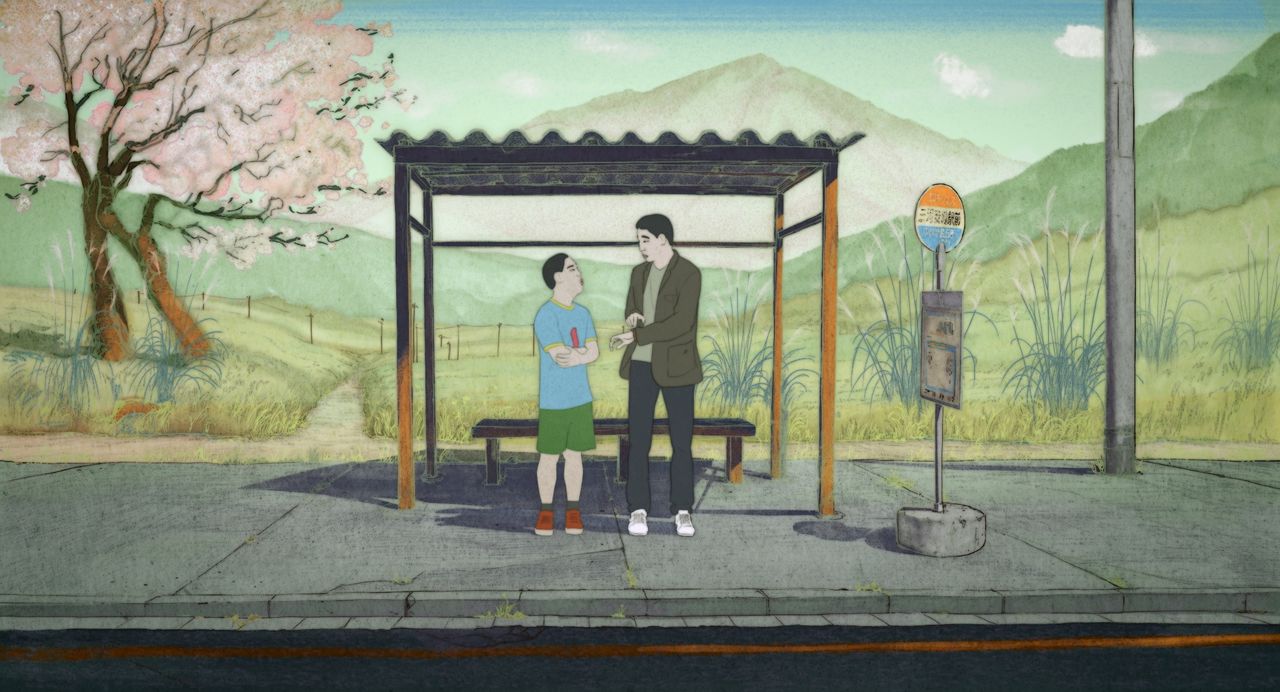
Komura takes his teenage cousin for treatment for his hearing on a bus he used to catch to go to high school.
As an artist, a musician, and a film director, Földes says that he always takes the same creative approach, relying on instinct rather than analysis. “I believe that my instinct is much more intelligent than my reason.” He gives the way he paints pictures as an example. “When I’m deeply inspired and I have an idea, it’s like I take a bow and shoot an arrow in the direction of what attracts and interests me, and then I alter and refine its path until I get what I want.”
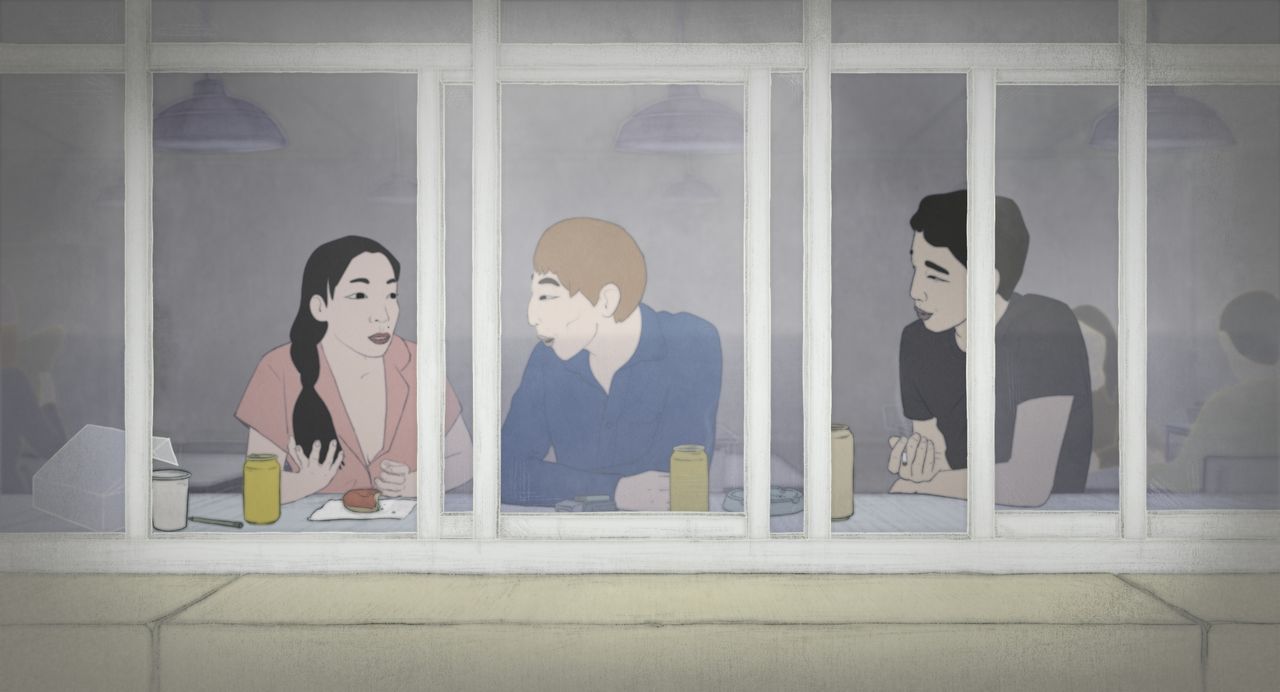
Kyōko was once the girlfriend of Komura’s friend.
Földes sees writing a script as like painting a picture. “You look at something, get an idea, and start painting. Then you add new layers, destroying what you’d seen. For me, this is because you’re expressing a global vision. It’s both beautiful and ugly, so you keep adding layers of ugliness on layers of beauty until you’re satisfied. Writing a script is the same, so I took the world of Murakami Haruki’s stories as a starting point, adding all kinds of layers of what I felt. I proceed by impulse, editing, and refinement—I love the idea of making something better.”
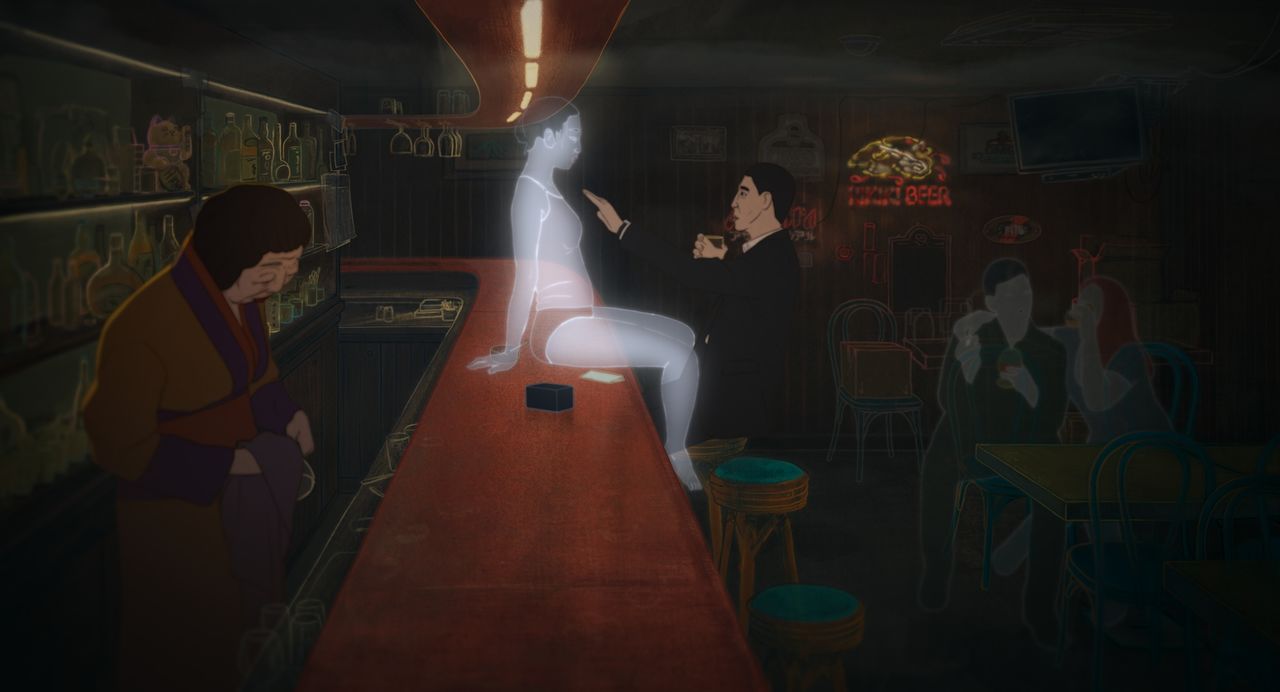
Komura keeps thinking about the words that Kyōko left : “Living with you is like living with a chunk of air.”
To mix six short stories into one, Földes first followed the paths of all the characters and produced five narratives. Then he reduced the dozens of characters to just four, creating a script that intertwined the plots around them. Dismantling and rebuilding the structure of the original fiction resulted in a seven-part film.
“The themes that run through all the stories gradually came into view in the process of writing and editing. Around the time I finished the script, I finally realized, ‘OK, this is the kind of film it will be.’”
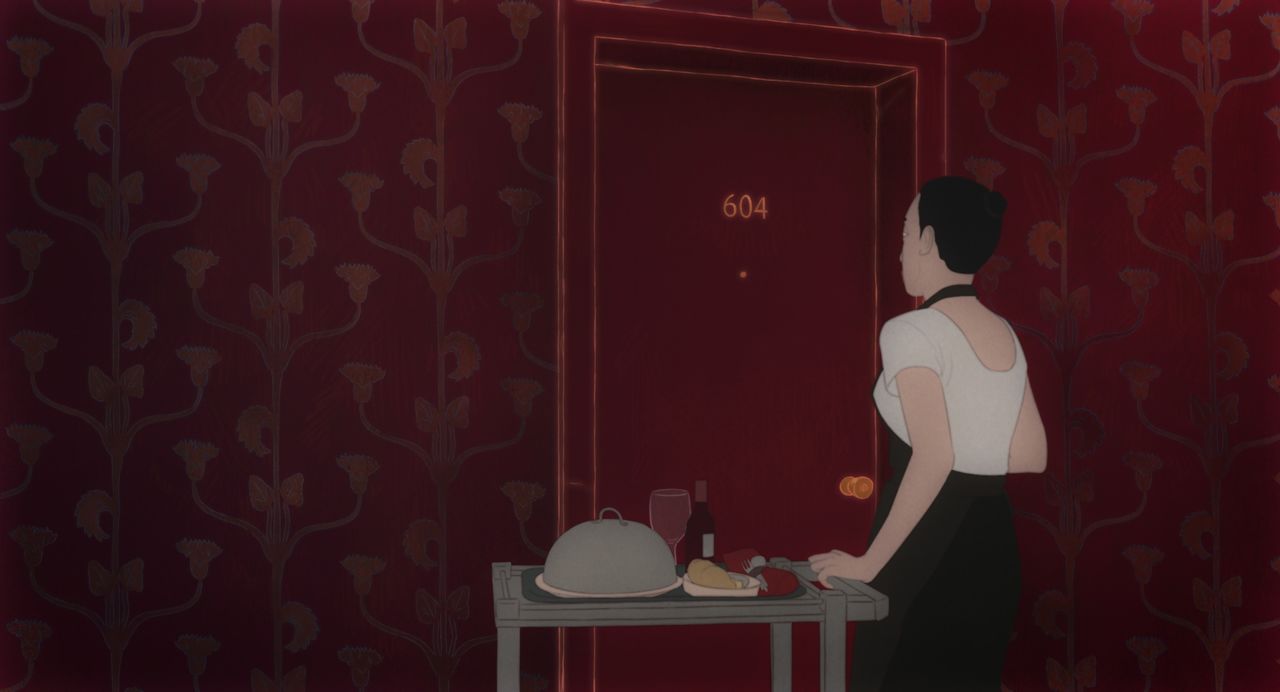
In a flashback to her twentieth birthday, Kyōko delivers food to the owner of the Italian restaurant where she worked.
A Distance from Disaster
In the process of combining shorter works, Földes thought the characters needed a shared foundation, which was the motif of earthquakes.
For Murakami, earthquakes are a major theme. Two of the adapted stories—“Super-Frog Saves Tokyo” and “UFO in Kushiro”—come from the collection Kami no kodomotachi wa mina odoru (trans. by Jay Rubin as After the Quake), which was written after the Great Hanshin-Awaji Earthquake in January 1995. However, the film shifts the setting to the aftermath of the Great East Japan Earthquake in 2011.
Földes says that viewing footage of the disaster zone became a chance for Kyōko to face up to the dormant feelings within her. “In 2011, hundreds of millions of people around the world watched videos of that earthquake and tsunami over and over again. I was among those shocked by the footage. So, it was natural to make it into the earthquake in the story.”
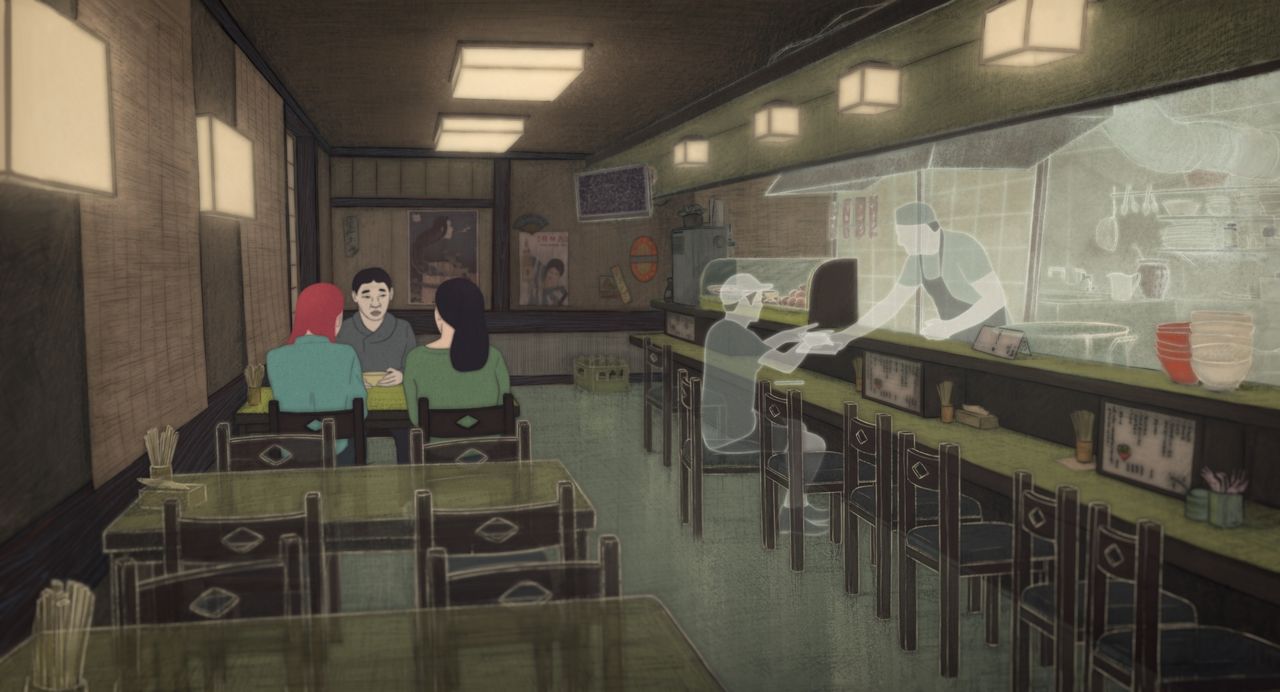
Komura travels to Kushiro in Hokkaidō to deliver a box to his colleague’s sister, and he has a meal with her and her friend. He hears about a man they know whose wife disappeared after a UFO encounter.
While the Great East Japan Earthquake is in the background, the film is centered on the personal stories of its characters. According to Földes, “They feel trauma from the earthquake, but they haven’t been affected directly.” There is a distinct distance between the story and the disaster.
“The characters are basically trapped. For them, more than a random event, the earthquake is an opportunity to rethink who they are. Kyōko reconsiders her married life, while Katagiri rediscovers his personal values through Frog, who’s another self. Komura brings out the emptiness within him into the world.”
This sense of a distance from the earthquake is also in the original stories. At the time of the Great Hanshin-Awaji Earthquake, Murakami was living in the United States, rather than Japan. As someone who is not Japanese, Földes’s perspective must have overlapped with Murakami’s.
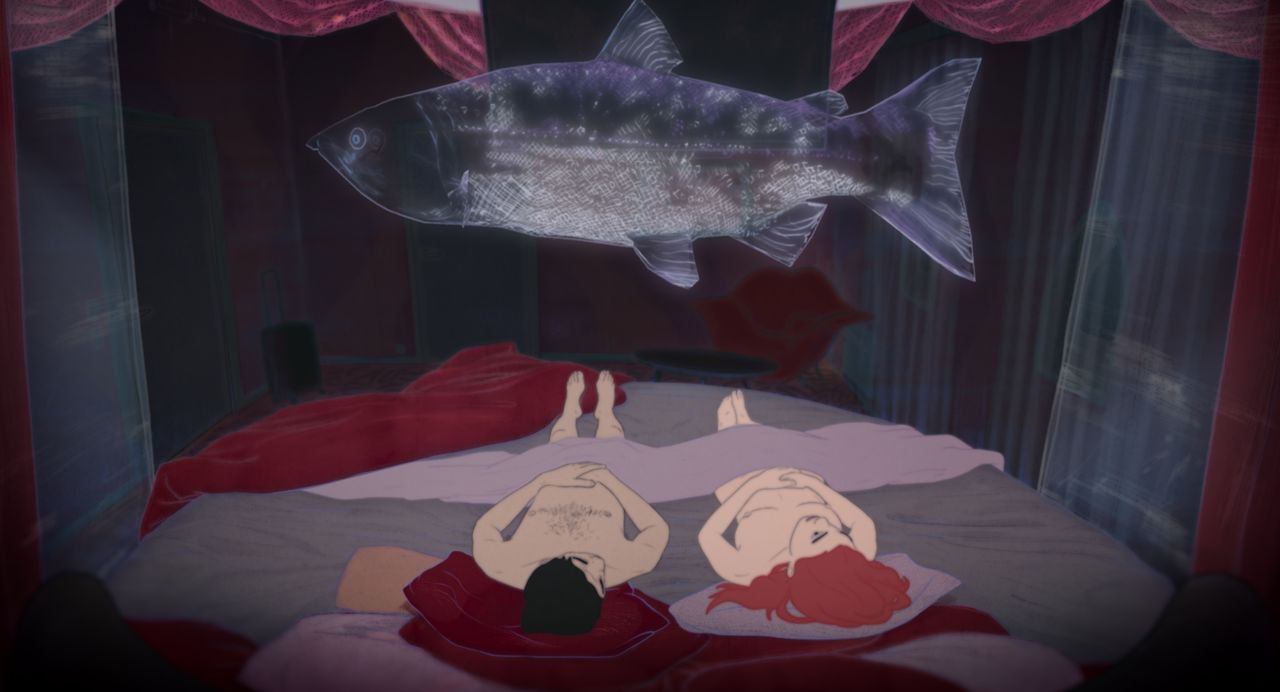
A woman Komura meets on his journey tells him a strange story.
Direct Inspiration
Földes visited Japan to finish off the script. “I thought that I might get some new inspiration. Every day, I went to lots of different districts, trying to forget about myself as I immersed myself in the various locations. At the same time, I wanted to discover a path through repeated self-questioning.” He says he finally completed the script while eating a bentō meal on the Shinkansen.
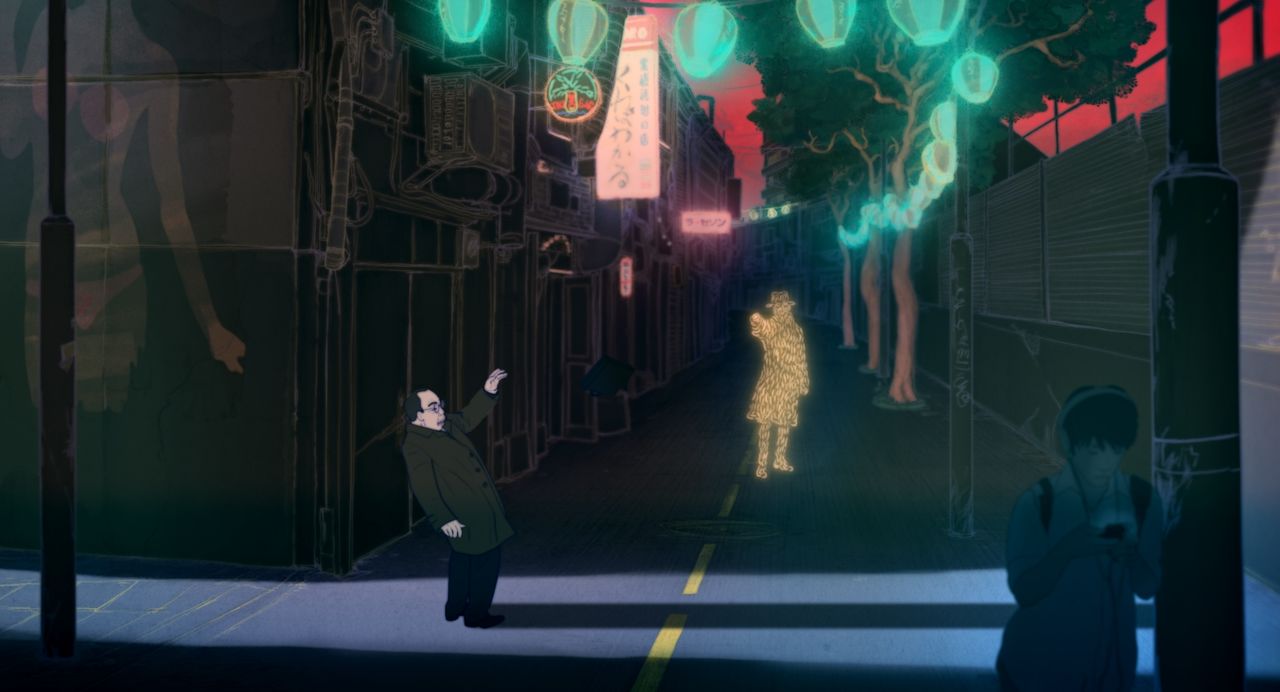
Katagiri falls to the ground on a back street in Kabukichō, as though he has been shot.
The inspiration from Japan is apparent in the text, and also the visuals and sound. Földes expresses his love and respect for Japanese art at times, such as through the use of shunga by Hokusai. Japanese can also often be heard, whether on television or through hospital announcements.
“At first, I was a composer, so to create original sound matching the worldview of the film, I wanted to play, mixing a lot of different sounds together with language,” he says. “Apart from the dialogue and voices, the film uses other sounds from Japan. In the visuals, I also blended an imaginary Japan with the real country, gleaned from the photographs I took on my trip.”
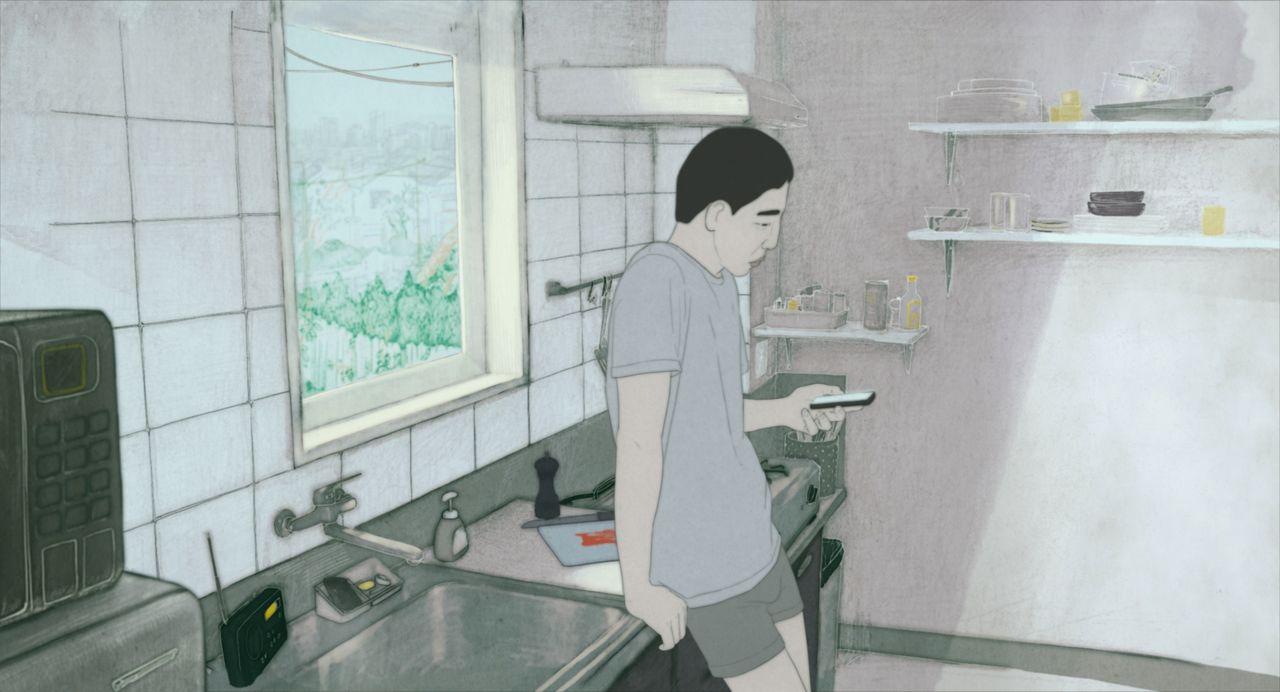
When Komura gets a call from his mother while he is making pasta, he remembers that the cat Watanabe has gone missing.
A new Japanese version of the film has been made ahead of the July release in Japanese theaters. Overseen by Földes, the director Fukada Kōji, known for movies like Harmonium (2016), led a cast of well-known actors to produce something more than a simple dubbed version. Földes sees the Japanese version as “a unique film, just as I imagined it.”
“First, we filmed the actors performing, and then we used this as a basis for the animation. The dialogue was in English. We made a French version through dubbing, but the actors had no experience, so we recorded them individually. By contrast, in the Japanese version, almost all the scenes were recorded with all the participants, like real conversations. Having everyone exchanging opinions, together with Fukada’s direction techniques, was a really wonderful experience.”
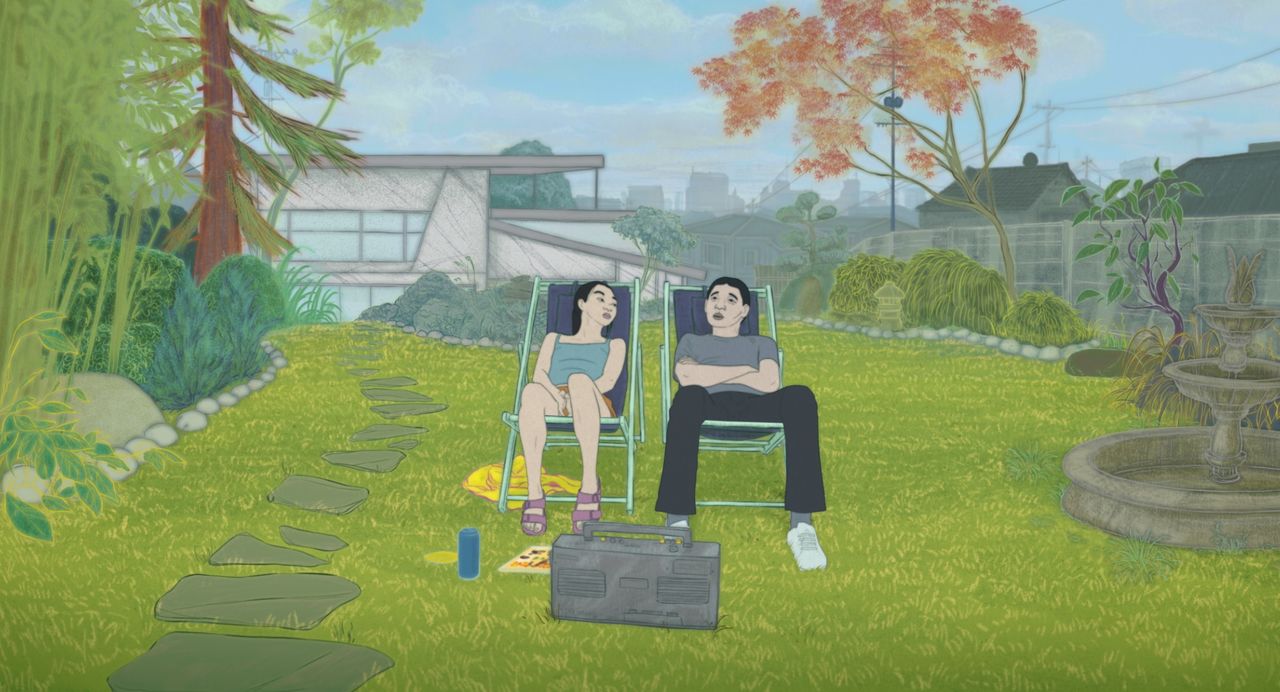
Komura meets a young girl and waits in her garden for Watanabe to pass by.
Reading Murakami’s stories and watching the film can be a valuable way of observing the artistic process in how Földes interprets the stories and reconstructs them into a single narrative.
Trailer
(Originally published in Japanese on July 20, 2024. Interview and text by Inagaki Takatoshi. Banner image from Blind Willow, Sleeping Woman. All photos from the film are © 2022 Cinéma Defacto/Miyu Productions/Doghouse Films/9402-9238 Québec Inc. (Micro_scope, Productions l’unité centrale)/An Original Pictures/Studio Ma/Arte France Cinéma/Auvergne-Rhône-Alpes Cinéma.)

